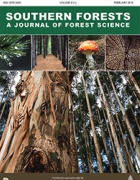The scale of deforestation in sub-Saharan Africa underscores the need for forest restoration. Information is scarce for evidence-based restoration options. Sown Senna didymobotrya, planted Ficus thonningii cuttings, sown S. didymobotrya and planted F. thonningii combined, and previously occurring native non-browse shrubs (NNS) were compared for their effect on selected plant nutrients and occurrence of Olea europaea subsp. cuspidata in north-west Ethiopia. The treatments were applied to experimental units established on previous grazing land. At the end of the fourth year, 60% of planted F. thonningii stakes survived. The leaf biomass production was encouraging. Senna didymobotrya attained close to 1 m height and crown width. Natural regeneration of O. europaea was observed only under previously occurring shrubs. Six previously occurring NNS species were identified. Soils immediately under these shrubs were richer in nutrients than between shrubs in the open spaces. Our results suggest that vegetative stakes and NNS could be promising tools for ecological restoration of decimated ecosystems in the highlands of Ethiopia. Management interventions, which aim at steering succession close to pre-disturbance forest community structure by facilitation, should be selective of the shrub species.

